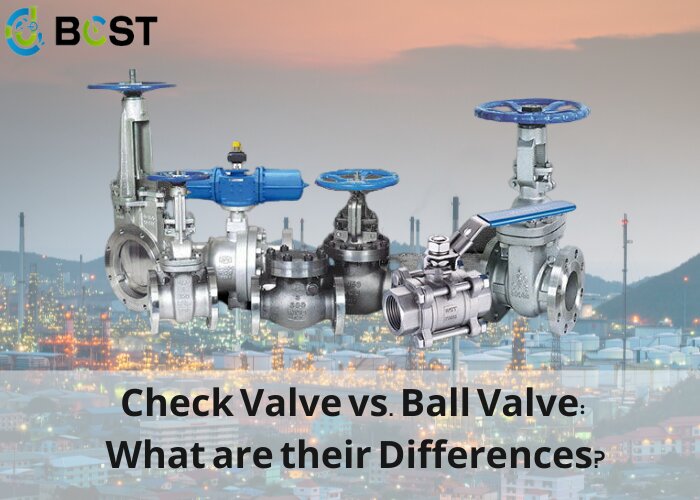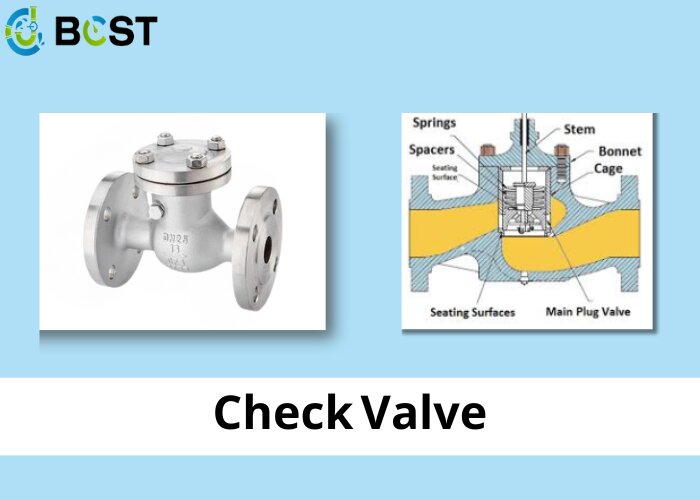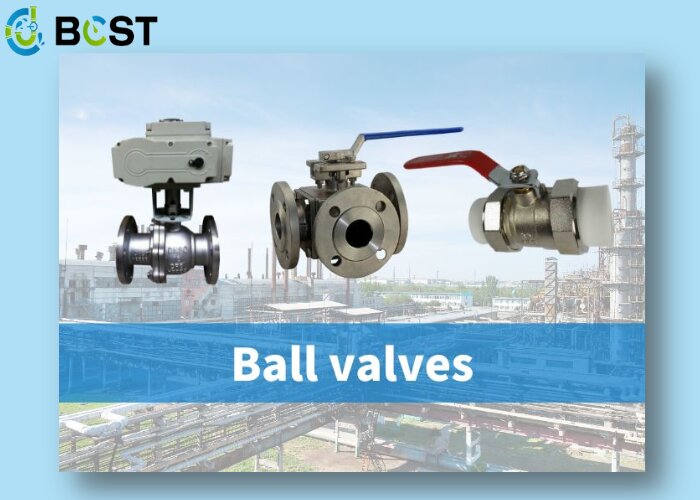
Welcome to our exploration of two essential components in the world of valves: the check valve and the ball valve. Valves are crucial devices used in various industries and applications to control the flow of fluids, gases, or even solids. While both check valves and ball valves serve the purpose of regulating flow, they do so in distinct ways, each offering unique advantages and disadvantages.
In this blog post, we will delve into the fundamental differences between check valves and ball valves, helping you understand when and why you might choose one over the other. Whether you’re a seasoned engineer or someone new to the world of valves, this guide will provide valuable insights into these essential components and empower you to make informed decisions for your specific applications. So, let’s dive in and explore the key distinctions that set check valves and ball valves apart!
For gases and fluids, check valves only allow one direction of flow. The fundamental function of a check valve is to prevent the system’s procedure flow from overturning, which could damage equipment or disrupt the operation.
Check valves are frequently used to safeguard compressors in gas systems or pumps in fluid applications where backflow can result in the pump or compressor closing. Additionally, they are used in procedure systems with various pressures that need to be kept apart. They do not require an external power source because they use the pressure drop caused by the medium flow.
Ball valves are straight-through, 90-degree turn valves with rounded seats that provide consistent sealing stress and round closure. The ball revolves around opening and shutting down the valve. Ball valves are used when a tight shut-off is required. These heavy-duty valves are capable of transporting gases, fluids, and fluids with suspended solids.
Ball valves are reliable, performing well even after many cycles and long periods of inactivity. Because of these characteristics, they are frequently preferred to gates and globe valves for shutdown and control applications. They do not, however, have influence over the options for throttling applications.
Check Valve vs. Ball Valve
In terms of Applications:
Check Valve Applications
Check valves are used to keep pressure and prevent backflow. They are typically used as a backup in the event that a pump breaks or when system pressure exceeds the capacity of the central equipment. Check valves are required in the oilfield, chemical, petrochemical, water, steam, petroleum refining, and other industries. Check valves are commonly found in manufacturing and waste-water treatment systems.
Ball Valve Applications
Ball valves are commonly employed in circulation systems on ships, fire-safe conservation services, and chlorine generators. Because of their difficulties in cleaning, they are not recommended for use in pharmaceutical, food and beverage, and bioprocessing applications (with the exception of chemical or non-sterile applications).
In terms of Types:
Check Valve
Check valves include swing and lift check valves, ball and duckbill check valves, double-disc or wafer check valves, umbrella and butterfly check valves, cartridge/manifold valves, foot valves, poppet check valves, and tilting disk check valves.
Ball Valve
Floating ball valves, trunnion valves, reduced port valves, full port valves, v-notch control valves, single body valves, three-piece body valves, split body valves, top entrance valves, welded valves, and so on are examples of ball valve types.
In terms of the Method of Control:
Check Valve
Fluid flow in the desired direction opens the valve, whereas backflow closes it. The weight of the check mechanism, back pressure, a spring, or a combination of these approaches all act to prevent backflow. The term “disc” is commonly used to describe the mechanism, but other terms such as “ball” and “poppet” are also used. The check valve should provide no barrier to forward flow and complete resistance to backward flow.
Ball Valve
The ball valve’s closure component is disc-shaped like a ball. The valve is unlocked with a quarter rotation of the actuator. The turn aligns the ball’s hole such that it is parallel to the flow, allowing the media to pass through the valve. When the valve is closed, the ball swivels so that the hole is vertical to the flow, impeding the media. Segmented characterizable balls use a section of the sphere rather than the entire sphere to block the port.
In terms of Materials:
Check Valve
Check valves can be made out of both metallic and nonmetallic materials. The outer shells are frequently made of metal or plastic.
Corrosion-resistant stainless steel is the most used material for check valves, while other substances include carbon steel and forged carbon steel.
Ball Valve
These materials can be used as body components, including brass, titanium, bronze, stainless steel, chrome, PVC, CPVC, and PFA-lined. Additionally, various seats and seals are employed in ball valves. Each substance’s chemical compatibility, temperatures, and pressures dictate the specific uses for which it is appropriate. Viton, TMF, Polychlorotrifluoroethene, Nylon, Delrin, Virgin PTFE, Ultra-high-molecular-weight polyethylene, Reinforced PTFE, Graphoil, Metal, and PEEK are some of the materials used.
In terms of Media:
Check Valve
The media is crucial when deciding on the kind and speed of the actuator and the substance for the valve body and disc. Valve systems can be made of a wide range of materials.
Ball Valve
Ball valves work admirably in both gas and liquid mediums. This valve style can be utilized for difficult substances like hydrofluoric acid, dry chlorine, hydrochloric acid, and oxygen. The Slurry will solidify in the cavity around the ball and seat, so slurry transfer is not recommended. The operating torque increases and the valve may become damaged. Most valve manufacturers advise including no more than 3% trace solids.
Which is better? Check Valve or Ball Valve?
Ball valves are used to stop the flow of fluid. The ball valve is often shaped like a sphere with an opening that is the exact diameter of the pipe. This quarter-turn valve has the advantage of not restricting liquid flow while it is open.
When the hole in the ball is the exact diameter of the pipe, it is referred to as a “full flow” valve. When closed, this sort of valve offers a good sealing system, and both gases and fluids can be passed through it. Conical plugs are another feature found on some ball valves. Additionally, 3-way and 4-way ball valves are available and referred to as sector valves.
Ball check valves are usually small, simple, and inexpensive. They are frequently used in refillable syringes, spray equipment, rubber bulbs for pumping air, gel minipump dispenser taps, and manual air pumps.
Although the balls are commonly made of metal, they can also be made of other materials, such as sapphire. Due to their hardness and chemical-resistant features, small input and outlet ball check valves with ruby balls and sapphire seats are also used in high-pressure HPLC pumps and related applications.
If the seat tears or scrapes out over time, the check valves may need to be replaced. As a result, these valves are designed to be interchangeable and occasionally housed in a tiny plastic body crammed inside a metal fitting that can bear high pressure and is fastened into the pump head.
How to Choose? Check Valve or Ball Valve?
Before selecting a valve, consider what it will be used for. Determine whether it will be used to control or stop the flow of a fluid. The media that is currently flowing in the system must then be validated. Examine whether the medium necessitates special hygienic conditions because it is corrosive, chemically neutral, a food product, or a medical fluid.
In terms of the operating system, it is critical to understand if the valve is powered manually or automatically. In one situation, a person needs to be present to regulate the valve, whereas in other cases, the valve can be managed remotely (for instance, from a control station).
The sort of assembly or installation that will be used is also important to consider, especially if the valve needs to be secured, bolted via flanges, or tightened in. Once these numerous components have been established, one may focus on the technical aspects of the installation, specifically the flow ,and pressure that will allow one to determine the size of the valve.








